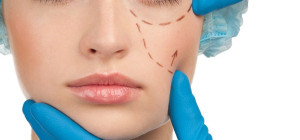 Cryotherapy means cold therapy. Once you press some frozen peas on a swollen knee or ankle, you’re treating the pain with a version of cryotherapy.
Cryotherapy means cold therapy. Once you press some frozen peas on a swollen knee or ankle, you’re treating the pain with a version of cryotherapy.
Cold therapy may be applied in various ways, including ice baths, whirlpools, ice massage, coolant sprays, and ice packs. When utilized in treating injuries at home, cryotherapy refers to therapy using gel packs or ice that are typically kept in a freezer until needed. They remain one of the time-tested, simplest methods of managing swelling and pain.
Stop suffering from an injury: Try cold therapy
Suppose you are getting ready for surgery to repair a damaged joint or bone. In that case, you’re also probably preparing for how you’ll take care of your rehabilitation when the operation has taken place. Physical therapy and medication are among the most popular methods of helping heal part of the body after being repaired surgically; yet another great solution you might want to think about is using cryo cuffs or cryo casts.
Do the Aircast cryo cuff and cryo cast help injuries heal quicker?
Cryo casts or cuffs, like the Aircast cryo cuff, are removable equipment pieces that may be useful after foot or knee surgery. It works as an easy alternative to icing and decreases the necessity to get up and replace the ice pack when it has melted and thawed, see more to learn about it.
Using an Aircast cryo cuff after knee replacement or surgery may save you a lot of time if you’re diligent about icing, is probably less expensive in the long run, and helps to stay off of your feet for most of the day, which is precisely what you’re recommended to do in the days after surgery.
What are the benefits of using Aircast cryo cuff?
All in all, cryo cuffs have the goal of significantly improving the whole “icing” or cooling process of your recovery after surgery by substantially decreasing the number of times needed to get up and retrieve fresh ice. Its main benefits over using regular ice involve:
- The hose can be detached, meaning that it’s possible to keep icing as you move about
- Easy to clean, empty, and transport
- No risk of chemical or water leakage
- Decreases the need to get up and walk to the freezer, keeping you off of your feet
- Decreases the need for freezing ice packs
- Significant decrease of ice that’s needed, the cuff reduces the amount to virtually a handful of ice a day for the whole day
How it works
Now that you’re aware of the benefits of using an Aircast cryo cuff, you’re likely curious about how it works. Basically, cold water enters a cuff and offers a user near-freezing temperatures. As the cuff’s bladder fills up with the ice-cold water, it’ll create pressure against the skin. Beyond this, the cuff contains a hole in which the kneecap goes so that the knee always stays correctly aligned with the joint.
In addition, there’s a tub and a cooler that continually sends cool water from the cooler, via a tube and to your knee.
All in all, if you’re serious about rehabilitating a joint or bone after surgery, the use of a cryo cuff is important. Remember that it’s possible to buy attachments that can fit your thigh, elbow, back, foot, hip, wrist, knee, ankle, and shoulder. For this reason, there isn’t any doubt that if you require a cuff to help you through rehab, you will have the ability to get one!







